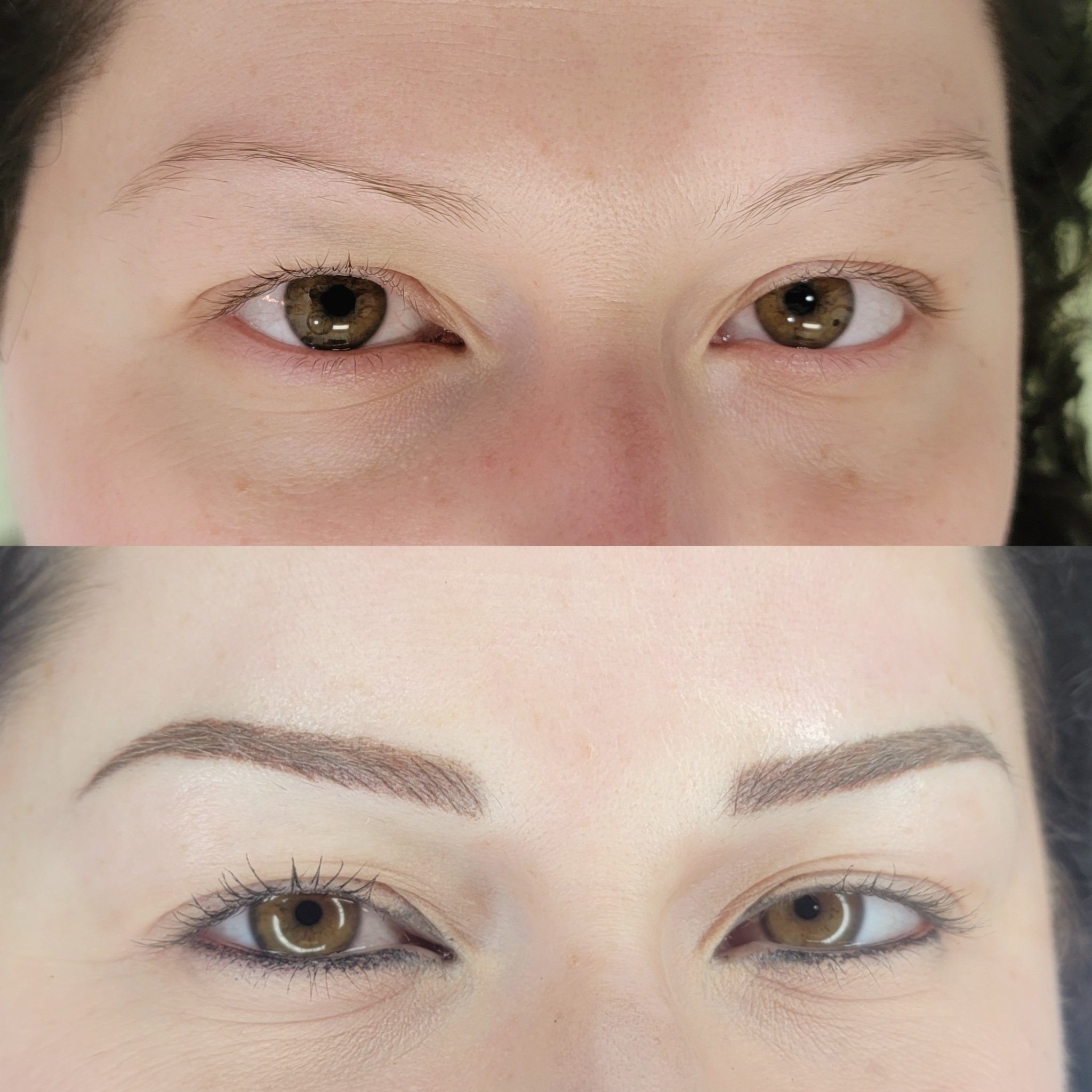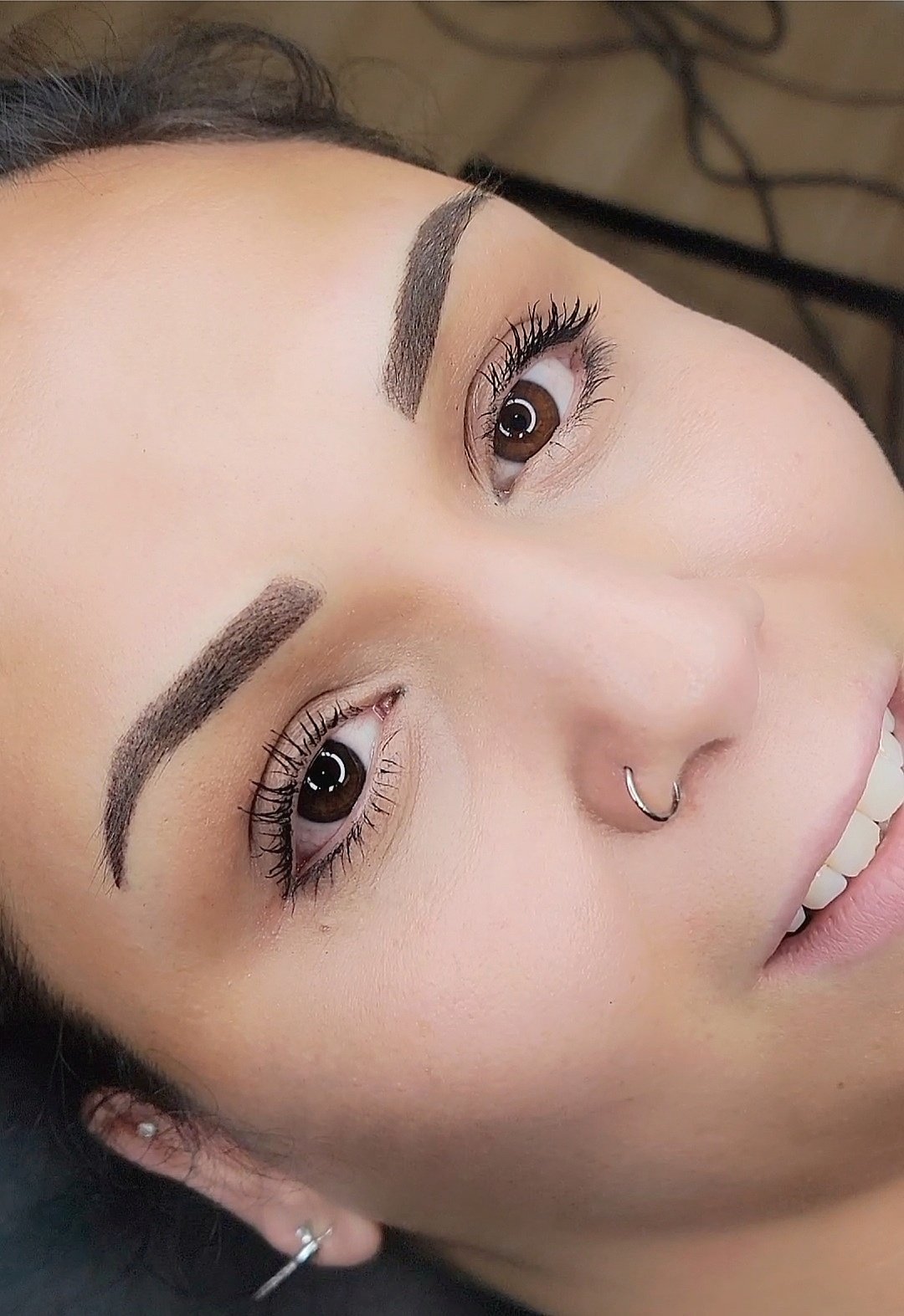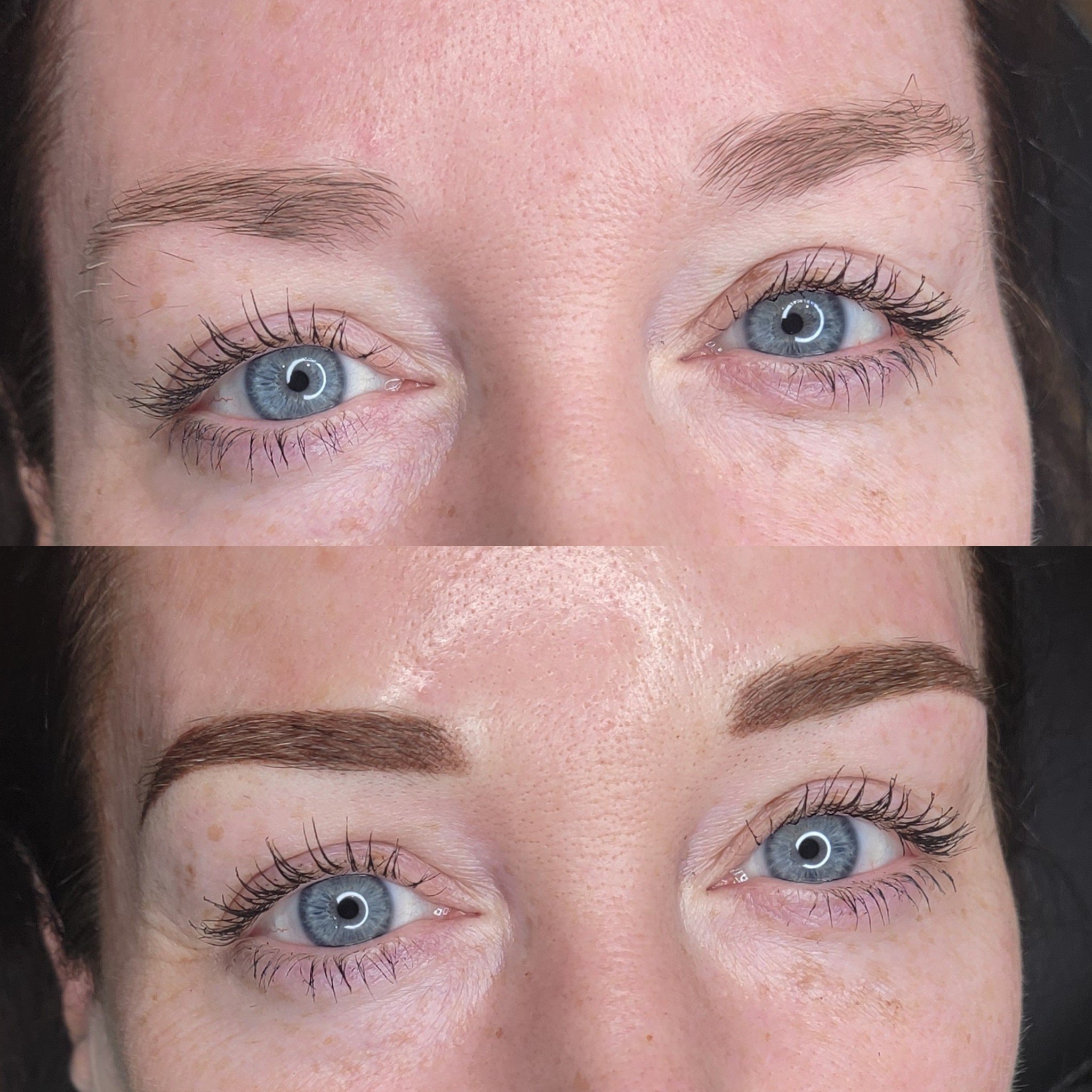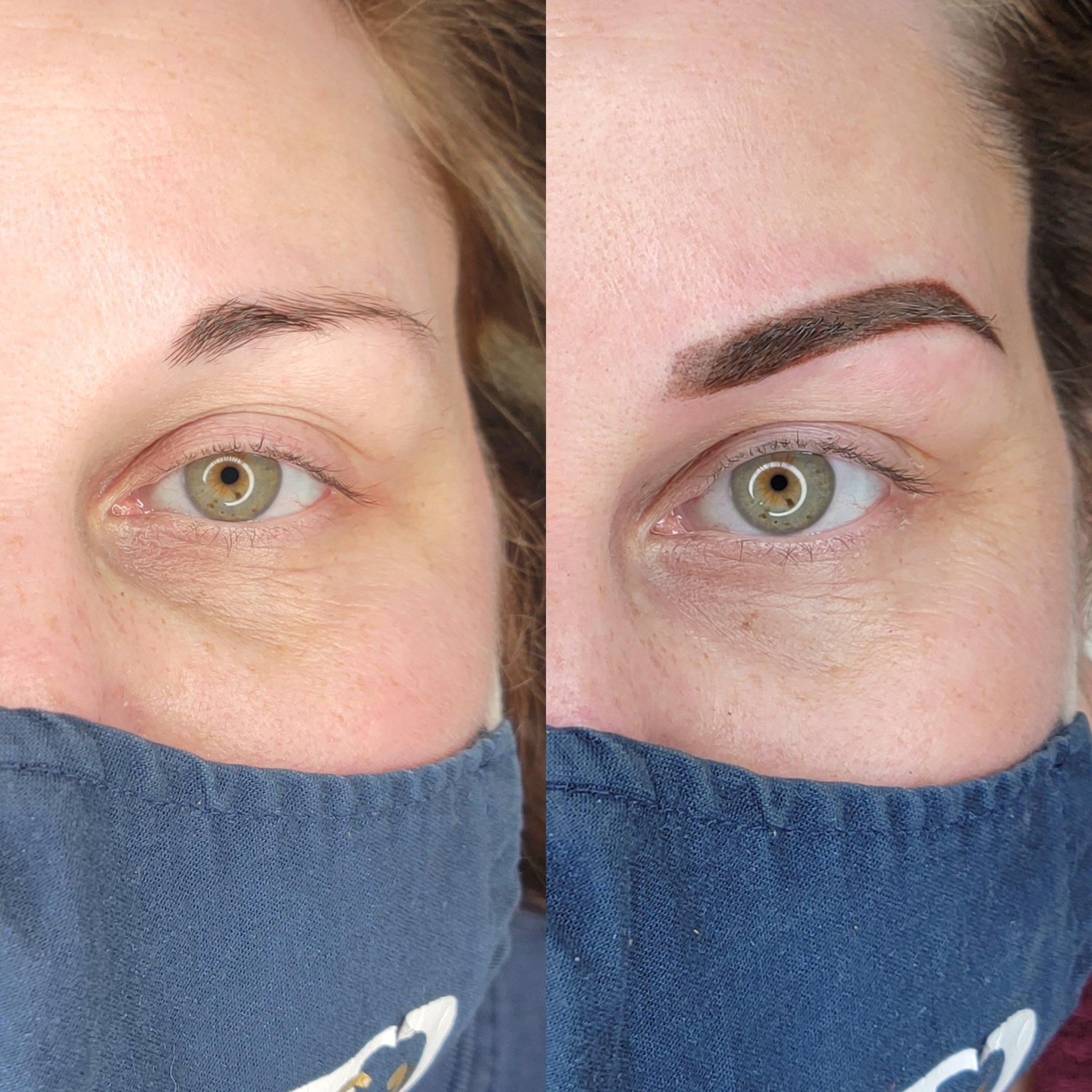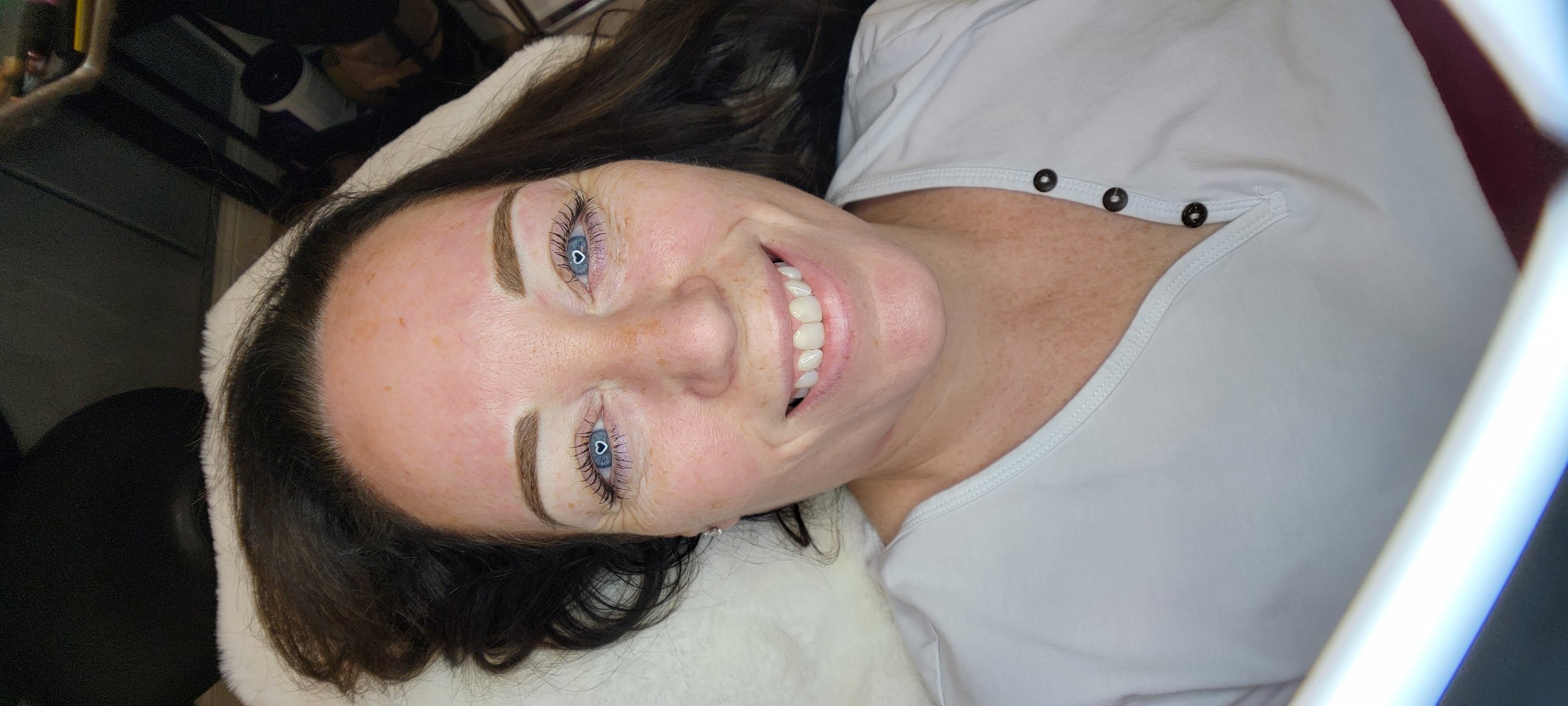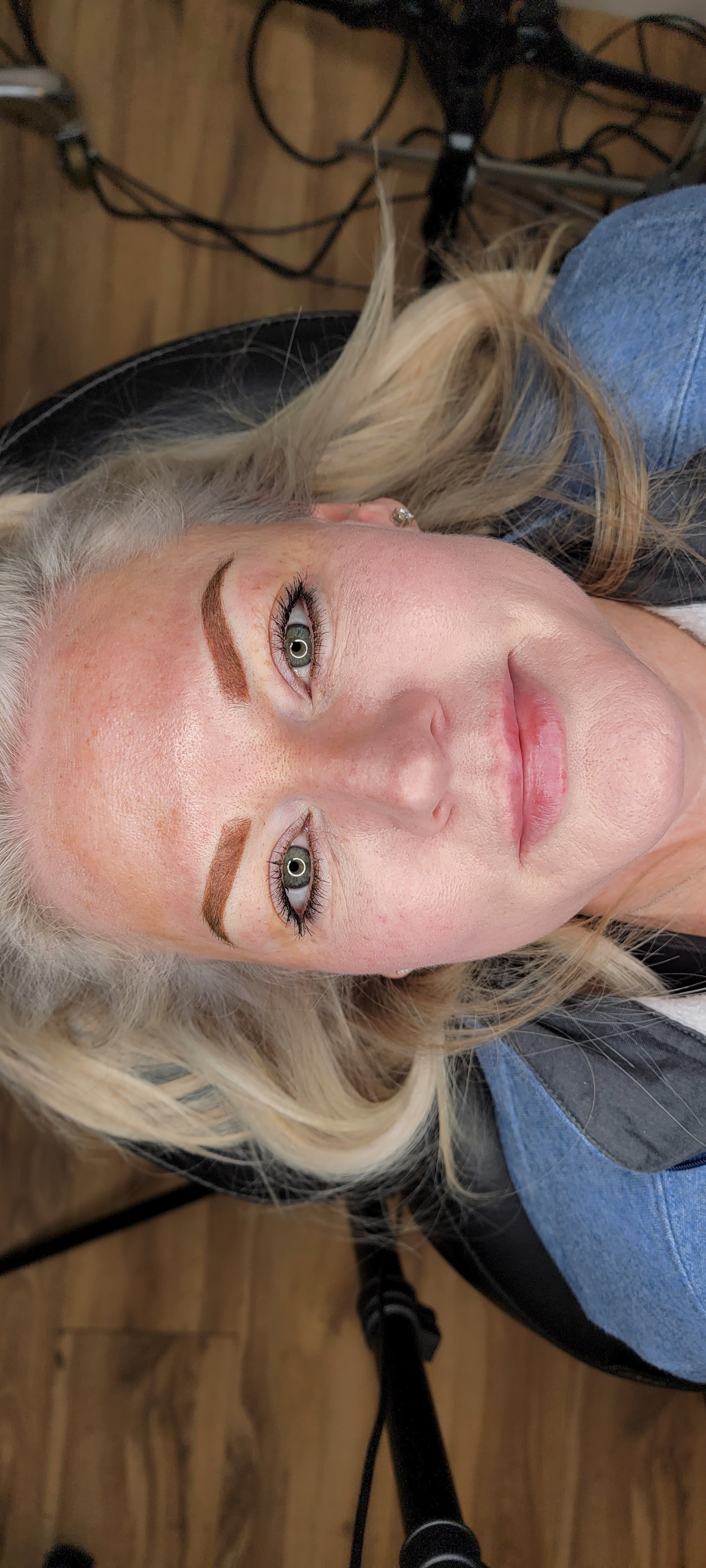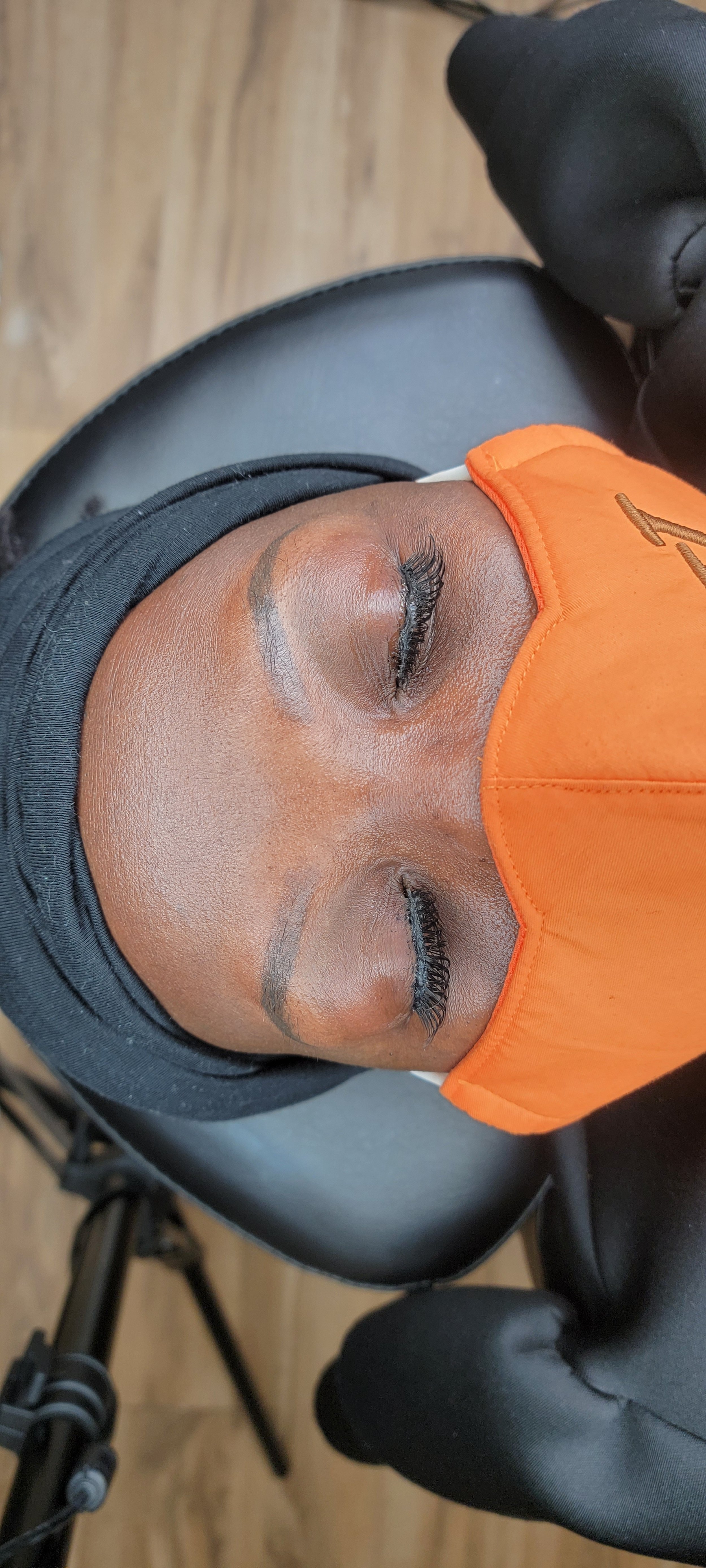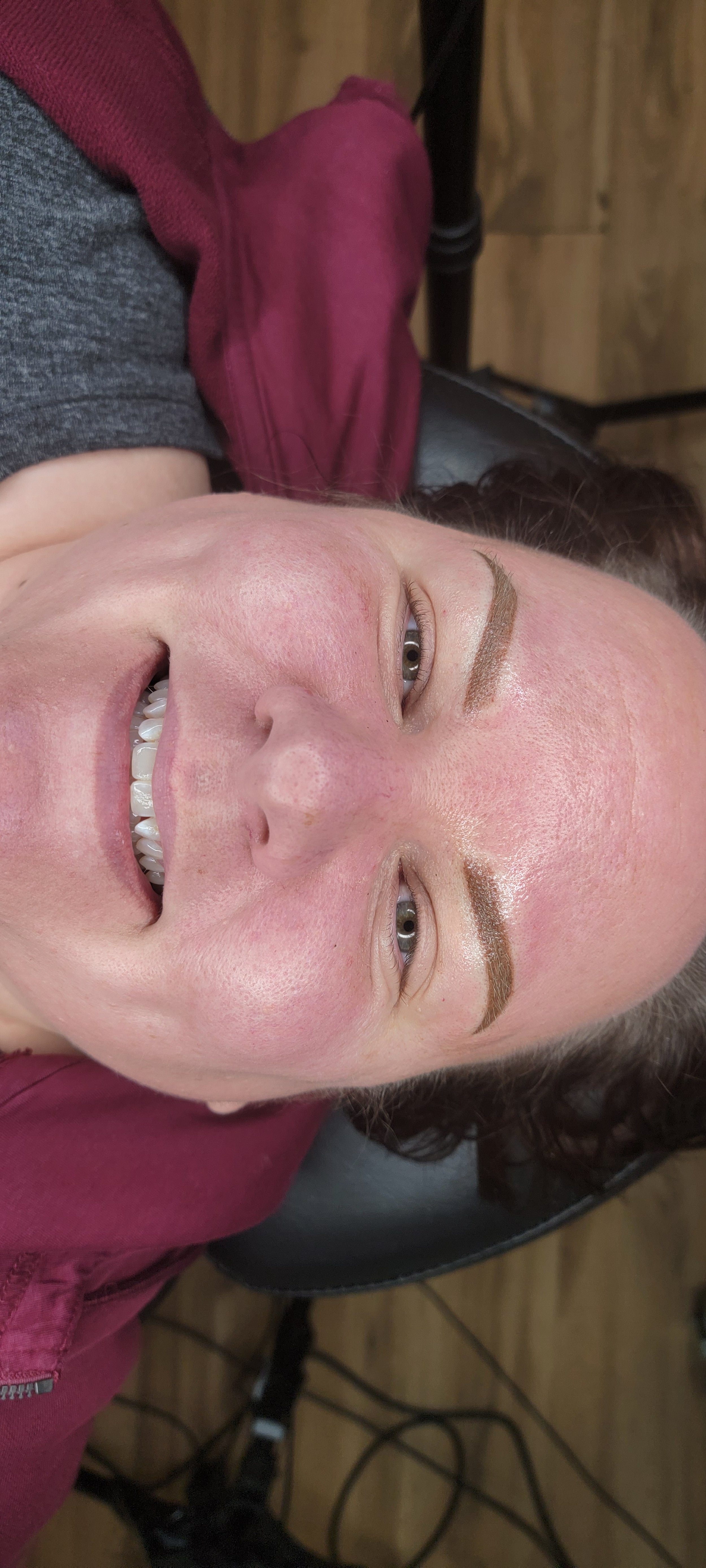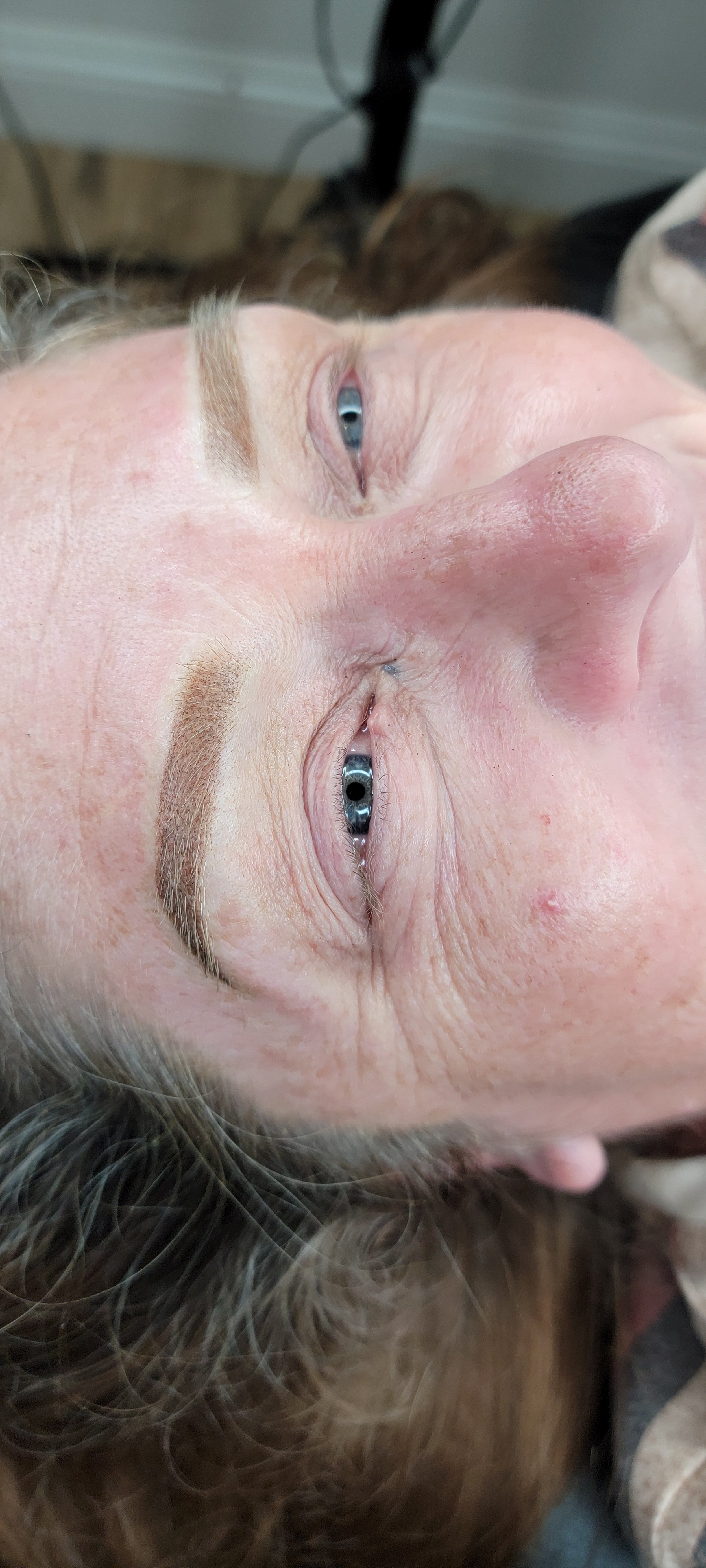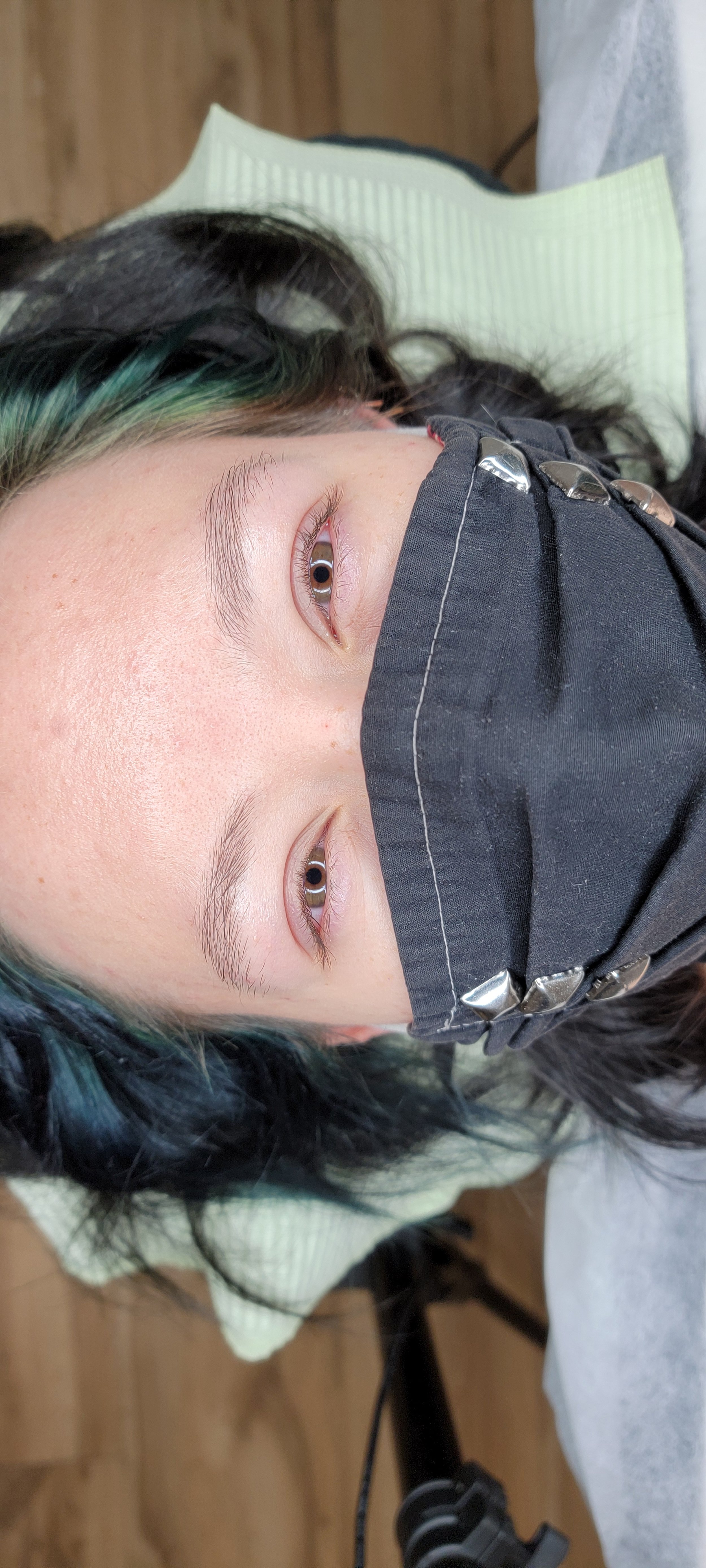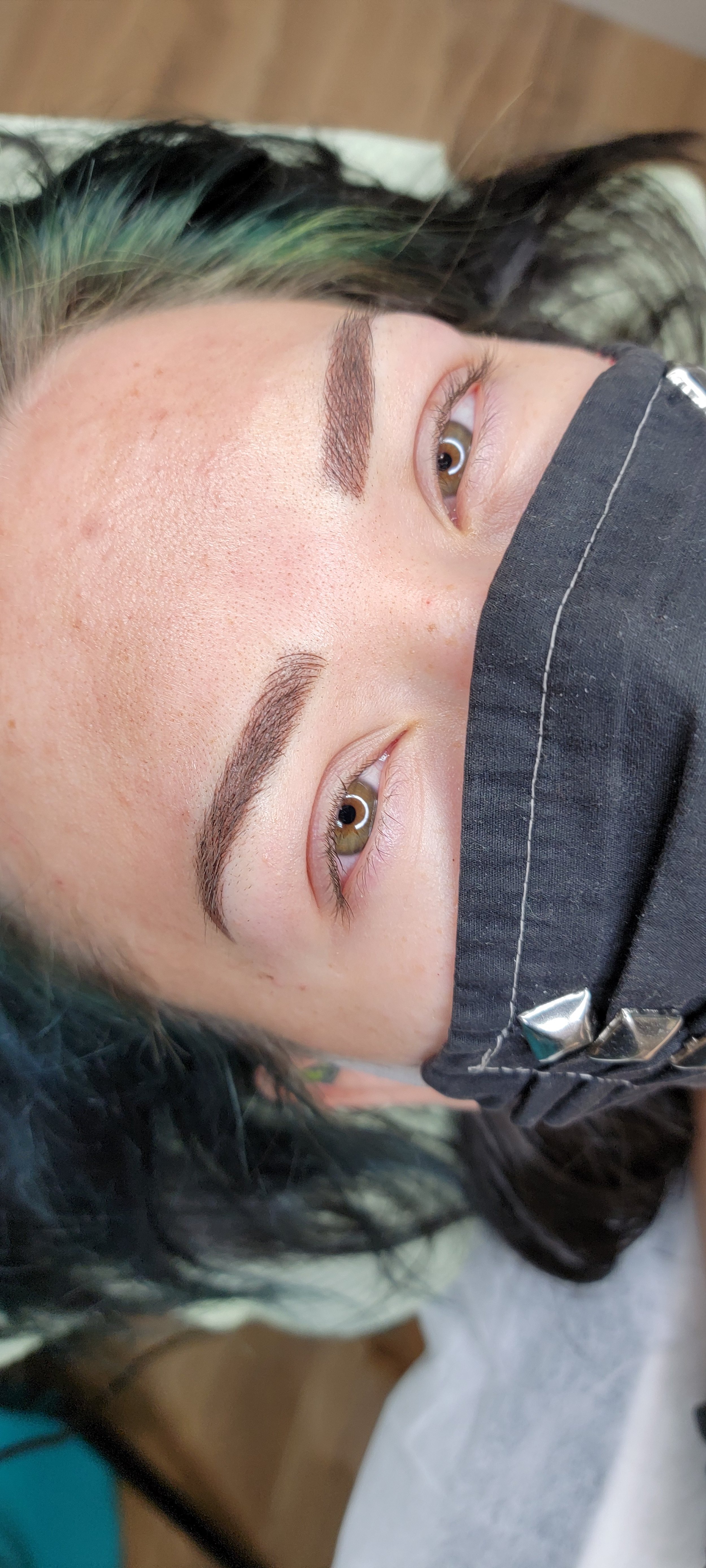
FAQs and Aftercare
-
Expect the color intensity of your procedure to appear brighter and darker than expected for approximately 5-7 days. Since the treated area may swell or become slightly red, it is advised not to make social plans for the same day. If you are undergoing the eyeliner procedure and wear contact lenses, please bring prescription glasses with you. You may return to wearing your contact lenses as soon as your eyes return to normal conditions. Additionally, it is important to wear sunglasses, as your eyes may be temporarily sensitive to light.
For lip procedures and if you have a history of cold sores or fever blisters, it is necessary to take an antiviral drug such as Valtrex or Zovirax 5 days prior to and 5 days after the treatment, or as prescribed by your physician. Application of Zovirax cream on the lip area 3 days before and 5 days after the procedure can help prevent a breakout.
Avoid scheduling a procedure right before or during menstruation, as you may be more sensitive at that time. If you have allergies or sensitive skin, it is best to undergo a spot allergy test one week before the procedure.
Do not take Aspirin, Plavix, or any other blood thinners at least 10 days prior to the procedure. Avoid consuming alcohol or caffeine 24 hours before the treatment.
Any tweezing, waxing, eyelash/eyebrow tinting should be done at least 48 hours before or two weeks after the procedure.
Ensure you eat before the procedure to remain comfortable, and aim for a good night's sleep the night before.
-
Proper care following your procedure is essential to achieve the best results. You may apply ice packs, protected with a cloth, to reduce swelling.
Keep the treated area moist by applying antibiotics, A&D ointment, or Vaseline five times a day using a sterile Q-tip. Artificial tears such as Visine may also be used.
Before touching any treated area, wash your hands thoroughly.
Apply ointment both before and after showers. You can refresh the treated area with cool water, gently pat it dry with tissue, and then reapply A&D ointment.
Avoid using soaps, cleansing creams, makeup, or chemicals on the treated area. Additionally, refrain from hot steamy showers, sauna, Jacuzzis, or swimming in chlorinated pools.
Do not expose your healing skin to direct sun or tanning beds. Use a good sunblock to help protect the color.
Avoid applying glycolic acids, bleaching creams, AHA acids, or Retin-A directly on the pigmented area after your procedure or once you are completely healed.
Resist the urge to pick, peel, or scratch the treated area, as this may cause uneven healing, scarring, or infections.
Flaking may continue for about two weeks, and the color will settle into the skin approximately 4-6 weeks after the initial procedure. A follow-up appointment is recommended at this time to assess the results and to help penetrate and lock the color into the dermal layer of the skin permanently.
-
A paramedical tattoo is a cosmetic tattoo applied due to a medical condition or to disguise the results of its treatment. Paramedical tattooing (also known as medical tattooing) is used to disguise scars, stretch marks, birthmarks, and other skin conditions.
-
Yes. My tattooing methods are controlled, gentle, and safe. I utilize a 100% single-use, disposable system for each procedure. Strict sterilization and sanitation standards are followed in accordance with OSHA requirements.
-
Tattoos are permanent, meaning you will always have a permanent marking on your skin. However, over time, you will notice a gradual softening of color occurring each year. Many women find this advantageous as they like the color to soften and lighten with time. However, if stronger color is preferred, color enhancement services are always an option. Factors that cause paramedical tattoos to fade include individual body chemistry, cellular turnover-rejuvenation, and exposure to sunlight.
-
Most clients are able to return to work or their other daily activities immediately following their procedure without any embarrassment or discomfort. For approximately 10 days following the procedure, you will need to apply a thin film of ointment to the procedure site. During this healing period, you will notice the color softening into your skin.
-
Your experience begins with an in-person consultation. This consultation requires a $50 deposit, which will be applied to your treatment balance if it is determined you are a viable candidate. During this consultation, we will discuss your medical background and any concerns. We will also conduct a small skin patch test to ensure that you and your skin will tolerate the pigment, if applicable.
-
The main difference lies in that inkless stretch mark removal encourages the body to repair itself, while the Camouflage stretch mark tattooing method deposits pigment into the affected area, effectively "coloring in" the marks. The texture of the skin remains much the same as before, but the white or red marks are not as visible.
-
Also known as inkless tattooing or inkless stretch mark removal, inkless camouflage is a safe and effective skin treatment that targets scars and stretch marks. This technique can be used over the entire body (except the face) and works with the body’s natural repair mechanics to reduce the appearance of scarring and stretch marks, bringing back the body's natural pigment/skin color into the scar and stretch mark. As with any cosmetic procedure, the results will vary depending on several factors such as your age, the condition of your skin, the age and size of the area being treated, and your overall health. Generally, clients will see a 20–50% reduction in the appearance of their scars after the first treatment. Usually, between 2 and 4 treatments are required.
-
Microblading, the most popular form of permanent makeup, is essentially an eyebrow tattoo. Unlike the noticeably dark brows that may have been common in the past, modern techniques aim to simulate individual hair strokes for a very natural appearance. Permanent makeup artists utilize a super fine pen to deposit small amounts of pigment directly under the skin.
-
Depending on your skin's condition, aftercare, lifestyle, and the technique used, eyebrows can last as long as 1.5 to 3 years without requiring a color boost.
-
Touch-ups are recommended once a year to keep the color fresh and the strokes crisp.
-
A topical anesthetic is applied to numb the area before and during the procedure, ensuring minimal discomfort. In fact, many of our clients often fall asleep during the process and wake up to their dream brows!
-
The procedure typically lasts about 2.5 hours, depending on the area being treated. This includes the consultation, taking before/after pictures, brow mapping, color matching, applying topical numbing, and performing the actual treatment.
-
Not really. Any redness, if present, typically disappears within an hour afterward. You just need to blot them every 1-2 hours and keep them dry for 48 hours after your appointment.
-
Healing time varies from individual to individual. Typically, it takes about 10-14 days for the scabs to form and flake off. Your skin will be considered healed after that occurs. It can take 4-6 weeks for the pigment to return and show the healed result.
-
This is a two-step treatment, consisting of an initial session followed by a follow-up session 4-8 weeks later. During the initial session, we will discuss the best style for you, draw the outline, and decide on the color. After applying the topical anesthetic, we will deposit the pigment.
During the 4-week follow-up session, we will check how your brows have healed and address any concerns you may have from the initial treatment, such as pigment loss or minor changes in color or shape. Since we can go darker but not lighter in shade, and bigger but not smaller in size, we aim to be conservative in the first session.
-
Anyone under the age of 18, pregnant or nursing, with heart conditions, or prone to keloids cannot undergo this procedure.
-
Yes, in most cases, diabetics can have permanent makeup done. Diabetics are known to sometimes have difficulties with healing, so proper aftercare is important. It is always wise to consult with your physician, as things may vary with each person and their health condition.
-
Scar camouflage is precisely that: a cosmetic tattoo service that includes camouflaging and blending your natural skin tone over existing scars, stretch marks, burns, and other types of skin discoloration. This procedure is completely customized for each client to ensure natural-looking and undetectable results.
-
Because scar camouflage is such a tailored treatment option, it can benefit many men and women. The procedure is often used to resolve the appearance of scarring or discoloration caused by stretch marks, facial burns, vitiligo, discolored scars, and other skin blemishes. In general, the success rate of the scar camouflage procedure is exceptionally high. Depending on your specific situation, you may require multiple treatments to reach the final results you desire.
One of the most exciting things about the scar camouflage treatment is that it doesn’t just conceal scarring; it can improve a scar's overall texture and tone. The digital needling process, much like the one used for microneedling treatments, induces your body’s natural healing response. Since this catalyzes an increase in collagen production, your results can include smoothed texture, improved skin tone, and even a reduction in the noticeability and overall appearance of your scar’s three-dimensional nature.
The best candidates for scar camouflage generally have scars with the following characteristics:
- The scar should be at least one year old.
- The scar should not display redness.
- The scar should be a lighter shade than the skin surrounding it.
- The scar should not be visibly sunken.
Every client at OM Design Studio is unique, so it’s usually best to schedule a consultation appointment to learn if you are a good fit for scar camouflage.
-
The technical process for scar camouflage and micropigmentation is very similar to that of other permanent makeup procedures. However, because a deeper understanding of tissue science, color theory, and pigmentation are needed to deliver optimal results, there is an added level of knowledge and experience.
Every client that comes to MLB Studio for a scar camouflage procedure will go through a personalized consultation process. During your consultation, you will meet with a technician to discuss your ideal results in detail. We will determine the best route to achieving your goals, including establishing a plan for color matching and the number of recommended treatments.
